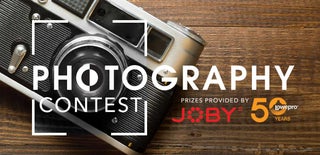Introduction: Glow Stick Photography
A little while back I happened to find a glow stick lying around and thought it'd be fun to try some glow stick photography. I was right, it was indeed a fun way to pass the time and I was even able to get my parents involved and, though I don't personally have any, I'm sure this would be a great was to entertain the kids. So, enjoy my instructable on glow stick photography! :)
Step 1: Materials
You will need:
- A tripod
- A camera
- You have to be able to manually adjust the settings
- A glowstick
- A camera remote control (if alone)
- Someone to push the trigger (if not alone)
- A blank wall
- This isn't entirely necessary but I think it looks better when there's nothing in the background to distract the viewer
- A dark space
- Basements are really great for this
Step 2: Camera Setting
The first thing you have to do is to place your camera on a tripod and put it on manual mode.
From there, two things need to be be manually set:
- The shutter speed
- The ISO setting
The shutter speed (the circle farthest to the left) will determine how long your shutter stays open for and, subsequently, how long you have to "write" with the glow stick. The longer the shutter is open, the more time you have to write.
The ISO setting (the circle farthest to the right) is the camera's sensitivity to light, so the greater the ISO the greater the sensitivity to light and vice versa. In this context, the greater the ISO the brighter the glow stick and the surrounding area will look. The setting of the ISO really all comes down to preference and how you want the picture to look. If you want it to be brighter go with a higher ISO, if you want it darker go for the low end. I picked a medium of 800, I liked that it was bright enough to see the writing but not so much as to ruin the look of darkness.
To save you the trouble I tried each setting and wrote the number it corresponded to in the picture.
Step 3: ISO 100
100 is VERY dark and fails to pick up all of the glow stick.
Step 4: ISO 200
200 is a little better but still doesn't pick up a lot of light if you don't move at a snail's pace.
Step 5: ISO 400
400 was a huge improvement from 200 but still wasn't as bright and defined as I wanted it to be.
Step 6: ISO 800
800 was definitely my favorite and what I chose for all of my pictures. I liked the balance between the light and dark here the most.
Step 7: ISO 1600
1600 was where it started getting too bright for me - I didn't like how you could see the person in the background.
Step 8: ISO 3200
3200 felt just like 1600 but it got more of the motion of the writer.
Step 9: ISO 6400
6400 is where my eyes started to hurt from the intensity of light, it was startling.
Step 10: ISO 12800
12800 one was WAYYYYY too bright for my liking, it felt really overwhelming and I didn't like it at all.
Step 11: Tips and Tricks
Here are some little tricks and tips I figured out will experimenting with glow stick photography
- Everything you write is captured as a mirror image by the camera. If you want to write words you have to write backwards and left to right.
- However if you have Photoshop or any other photo editing program you can just invert the picture and you should be fine
- If you want to draw something without all of it being connected, like a smiley face (eyes, mouth, etc.), cover the tip of the glow stick with your hand, move it to where you want to beginning drawing again, and then remove your hand.
- Putting your hand over the light prevents the camera from capturing it, thereby letting you draw separate segmented parts
- Try changing your distance from the camera during the shot for a change in perspective.
- Try to keep the glow stick level.
- Move your arm instead of tilting the glow stick so writing looks straight on.
Now go have fun experimenting with glow stick photography, I'd love to see what you come up with! :)

Participated in the
Photography Contest 2017











